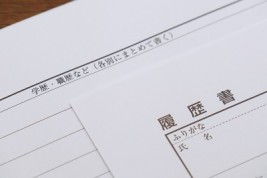Popular Employment Companies for Graduates in Japan
In this article, we summarized the companies that are popular among Japanese university students who are going to do job hunting in 2021 and their reasons for international students who are looking for jobs in Japan. Unlike other countries, this is a result uniquely Japanese. If you are a foreigner looking for a job in Japan, please use this as a reference.Ranking of popular Japanese companies for Japanese university students(2021)Career-tasu Job Hunting21, a job search information medium for new graduate students, surveyed college students planning to graduate in March 2021 regarding companies where they want to find employment. The ranking is shown below.RankName of CompanyIndustryNo.1Tokyo Marine NichidoInsuranceNo.2Sompo JapanInsuranceNo.3Itochu CorporationGeneral TradingNo.4Mitsui Sumitomo Insurance GroupInsuranceNo.5Japan AirlinesAir TransportationNo.6All Nippon AirwaysAir TransportationNo.7Sony CorporationConglomerateNo.8Mitsubishi CorporationGeneral TradingNo.9SuntoryFoods & BeveragesNo.10ToyotaAutomotive ManufacturerReference:Career-tasu Job Hunting21/Ranking of Popular CompaniesBasically, only large companies have been focused in young people, and it is the same tendency in other countries. However, it is unthinkable in other countries that the first, second, and fourth place are insurance companies. What do current Japanese college students look for in employment and why do they choose insurance companies instead of the most popular Internet companies and manufacturers abroad?Why Are Insurance Companies Popular in Japan?While many companies have reduced the number of recruitment due to the influence of the new coronavirus, it seems that insurance companies have not reduced the number of recruitments. These companies have the impression that they have relatively high salaries and are stable, and that it is becoming popular that a wide range of students can apply, regardless of their major in university.In addition, the insurance industry, which was mainly a car insurance business, considering the possibility that demand for cars will disappear, has been focusing on the insurance that is applied in the event of an earthquake or other natural disasters in recent years. The insurance industry would has a high growth potential.With three insurance companies listed, it seems that job-seeking students in 2021 are looking for a stable workplace rather than a challenging workplace.Companies Whose Popularity has Risen and FallenWithin the companies ranked in the top 10 this year, some companies are popular every year, like JAL and ITOCHU, but some companies have risen noticeably in the ranking having a much higher position, like Tokio Marine and Nichido Fire Insurance.From now on, we would like to explain in detail about the five most distinctive companies in the ranking.Tokyo Marine NichidoTokyo Marine Nichido ranked 10th in the ranking of popular companies last year but ranked 1st this year. The factors behind this may be the high annual income and the international environment.High Annual InconmeAlthough the basic salary of Tokyo Marine & Nichido Fire Insurance is not much different from others insurance companies, the bonus received by each employee has a great impact on the annual income. The average annual income of this company is about 8.35 million yen, but according to the commitment and results of their employees, it is often seen that it exceeds 10 million yen.A bonus of about 600,000 yen was paid to a new graduate employee in the second month after joining the company, which makes it more attractive in terms of income than other companies. In addition to the monthly salary, employees can receive up to 100,000 yen in rent subsidies, which is excellent in welfare and can be said to be an attractive company in terms of treatment.International environmentTokyo Marine & Nichido Fire Insurance is expanding its business not only domestically but internationally as well, with approximately 45 overseas bases. Being able to work in different big cities around the world is also a reason for its popularity. Therefore, even in the working environment, diversity is spreading and it seems to be a popular place of employment for international students and overseas people.Itochu CorporationIn Japan, trading companies (Shousha) are a very influential type of business. In particular, ITOCHU Corporation, Mitsubishi Corporation, Sumitomo Corporation, etc., which are said to be “general trading companies (Sougo-Shousha)”, are always employment destinations that are popular with university students.What is a General Trading Company (Sougou-Shousha)?General trading companies procure various products such as food, energy resources, and machinery on a global scale, and sell them not only in Japan but worldwide. They have big projects which have a big impact on the country, and they also have manufacturers and financial companies, that’s why they are expanding globally.High Annual IncomeThe average annual income of Itochu Corporation is about 14 million yen, which is a very high rate among Japanese companies. Even in the first year of new graduates, the average annual salary of a general-work employee is about 5.5 million yen, which means that a high standard of salary will be obtained from the first year after joining the company.Acquisition of Various SkillsMajor general trading companies have excellent human resources from Japan and the world, and not only is there an environment where they can learn business know-how, but there is also the aspect that they can acquire various skills from excellent human resources. One of the reasons why it is so popular is that you can learn languages such as English and the skills to do business globally such as finance.Japan Airlines (JAL)Specific Benefits for AirlinesIn addition to general benefits such as social insurance and transportation allowance, there is an employee discount system for air tickets. This system is a JAL-specific benefit that allows employees to purchase air tickets at a discount of 90%. There is no doubt that it is a benefit for students who like to travel.High Annual IncomeThe average annual income of the aviation industry is also high, and among them, the average annual income of JAL is about 8.27 million yen, which is the top class in the industry.SuntoryOverseas Expansion SuccessSpeaking of Japan’s major beverage makers, there are Kirin, Asahi, Suntory, etc. Among them, Suntory has always been very popular. The reason for this is the charm of the corporate culture. As the founder’s famous phrase says “Yatte-minahare”, wich means “Just try it”. Suntory is challenging various new things, and it is also Suntory that has actually succeeded in expanding overseas first than the others beverage companies.Unlisted CompanyAs the Suntory Group is a privately held company, it does not need to produce short-term results for its shareholders, so it may be one of its attractions to be able to engage in long-term projects.ToyotaWhy has it become less Popular?Speaking of Toyota, it is the company with the highest market capitalization in Japan and the world-famous automobile manufacturer. Although it is still a popular company for Japanese university students to find employment. This year Toyota was at the 10th place of popularity, but compared to a few years ago, the popularity of job hunting students is gradually decreasing. This is because young people today are less interested in automobiles, and considering the future of the automobile industry, it is not necessarily a growth industry. As more and more students are no longer interested in cars, the number of students who want to work for an automobile manufacturer may continue to decline.ConclusionDue to the corona shock, university students scheduled to graduate in 2021 are looking for a job which gives them an economic and labor stability besides looking for a job of their liking. Therefore, we think that companies with high stability will continue to be ranked high in the future. In addition, as the number of students seeking new ways of thinking and international communication has increased in recent years, companies such as Mitsui Sumitomo Insurance Co., Ltd. and ITOCHU Corporation that are focusing on diversity and international development are becoming popular for job hunters.We sincerely hope that by finding a job in Japan, you will be able to achieve your desired career development.If you are an international student who is thinking of finding a job in Japan and want to get a job related to IT, please register with G Talent, a recruitment agency specializing in foreign IT engineers. Professional consultants will help you with your job hunting for free.















